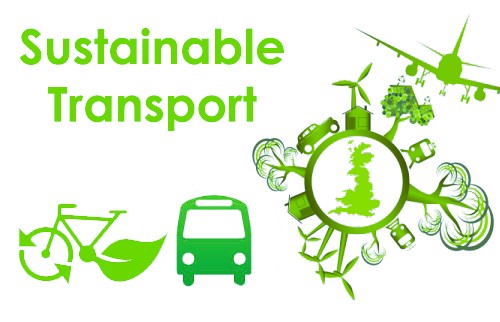
Creating sustainable employee transportation is a commendable initiative that can have numerous benefits for both the environment and your workforce. Here are some steps to help you get started:
- Assess Current Transportation Methods: Begin by understanding how your employees currently commute to work. This can involve surveys or data collection on modes of transportation used, distances traveled, and any existing infrastructure or incentives in place.
- Set Goals and Objectives: Determine what you hope to achieve with sustainable transportation initiatives. This could include reducing carbon emissions, easing traffic congestion, promoting employee health and well-being, or cutting costs.
- Develop a Transportation Policy: Create a clear and comprehensive policy outlining your organization’s commitment to sustainable transportation. Include guidelines for preferred modes of transportation, incentives for choosing sustainable options, and any support or resources available to employees.
- Provide Infrastructure and Amenities: Make it easier for employees to choose sustainable transportation options by providing amenities such as bike racks, showers, changing rooms, and secure storage for bicycles or electric scooters. Consider also investing in electric vehicle charging stations for employees who drive electric cars.
- Promote Alternative Modes of Transportation: Encourage employees to explore alternative modes of transportation such as biking, walking, carpooling, vanpooling, public transit, or telecommuting. Offer incentives such as subsidies for public transportation passes, rewards for carpooling, or flexible work schedules to accommodate telecommuting.
- Educate and Raise Awareness: Provide information and educational resources to employees about the benefits of sustainable transportation and how they can participate. This could include workshops, seminars, or informational campaigns highlighting the environmental, health, and cost-saving advantages of alternative transportation options.
- Monitor and Evaluate Progress: Continuously monitor the effectiveness of your sustainable transportation initiatives. Track metrics such as mode share, carbon emissions, cost savings, employee satisfaction, and any challenges or barriers encountered. Use this data to refine your strategies and make adjustments as needed.
- Celebrate Successes and Recognize Achievements: Acknowledge and celebrate milestones and achievements in promoting sustainable transportation within your organization. Recognize and reward employees who actively participate and contribute to the success of the initiative.
By following these steps and demonstrating a strong commitment to sustainability, you can create a more environmentally friendly and employee-friendly transportation system within your organization.
Implementing sustainable employee transportation initiatives comes with both benefits and challenges. Here’s a breakdown of some roadblocks and benefits:
Roadblocks:
- Resistance to Change: Employees may resist switching from their current modes of transportation, especially if they are accustomed to driving alone to work. Overcoming this resistance requires effective communication, education, and incentives.
- Infrastructure Limitations: In some cases, the lack of infrastructure for alternative transportation modes, such as bike lanes or public transit options, can hinder the adoption of sustainable transportation methods.
- Cost Considerations: Investing in infrastructure, incentives, and amenities for sustainable transportation can require financial resources upfront. Organizations may face budget constraints or difficulty in justifying these expenses to stakeholders.
- Logistical Challenges: Coordinating alternative transportation options like carpooling or vanpooling can present logistical challenges, especially for organizations with dispersed or remote work locations.
- Limited Accessibility: Employees may face challenges accessing sustainable transportation options, particularly in areas with limited public transit coverage or inadequate pedestrian and bike infrastructure.
Benefits:
- Environmental Impact: Implementing sustainable transportation initiatives can significantly reduce carbon emissions and air pollution, contributing to environmental sustainability and mitigating climate change.
- Cost Savings: Encouraging alternative transportation methods can lead to cost savings for both employees and employers. Reduced fuel expenses, maintenance costs, and parking fees can translate into significant financial benefits.
- Improved Employee Health and Well-being: Active transportation modes such as walking and biking promote physical activity and can contribute to improved employee health and well-being. Additionally, reducing reliance on cars can lower stress levels associated with commuting.
- Enhanced Corporate Image: Demonstrating a commitment to sustainability through employee transportation initiatives can enhance your organization’s reputation and attractiveness to environmentally conscious customers, investors, and job seekers.
- Reduced Traffic Congestion: By promoting alternative transportation options and reducing single-occupancy vehicle trips, organizations can help alleviate traffic congestion, leading to smoother traffic flow and shorter commute times for all road users.
- Employee Satisfaction and Engagement: Providing sustainable transportation options and incentives demonstrates care for employees’ needs and preferences, leading to increased job satisfaction, morale, and overall engagement.
- Compliance with Regulations: Implementing sustainable transportation initiatives can help organizations comply with government regulations and meet sustainability targets set by local authorities or industry standards.
Conclusion : Despite the challenges, the numerous benefits of sustainable employee transportation make it a worthwhile endeavor for organizations committed to environmental stewardship, cost savings, and employee well-being.
